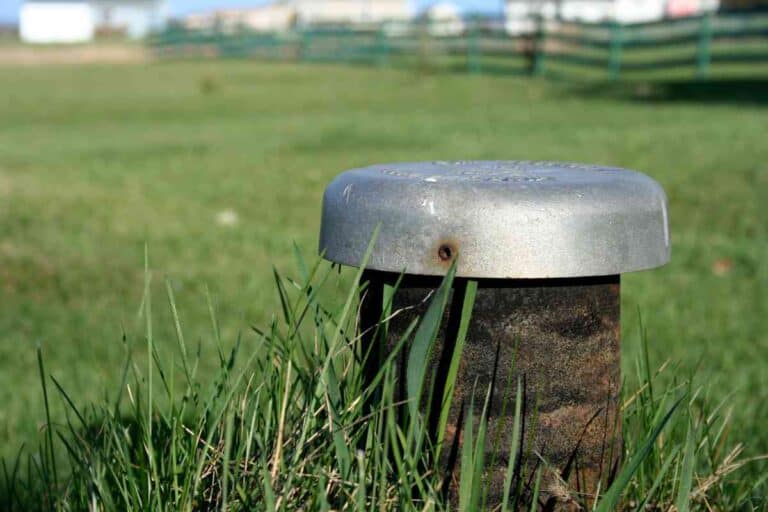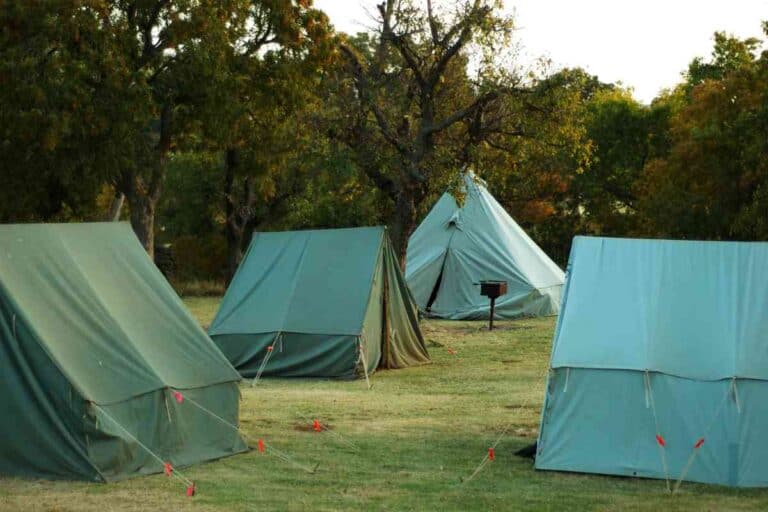4 Ways To Pack And Store A Tent WITHOUT Damaging It!
When it’s time to store your tent, there are ways you’re going to want to go about doing it to preserve the integrity of the tent for the season to come.

What’s the best way to store a tent?
Here are the 4 most creative ways to store a tent without damaging it:
- carefully clean the tent
- be diligent when you dry your tent
- store your tent outside of the bag
- display your tent out in the open for all to see
Anyone who knows me, knows I’m an avid tent camper. There are few things in life that I like more than spending a night – or hopefully more – outside in a tent. That said, I know the importance of storing a tent after its use.
Not only will proper storage keep the tent intact, but it also means that there is little to no possibility that the tent will be in the way throughout the seasons that it isn’t getting used as often.
Sometimes, we have to be a bit creative when we are working to find the best storage option for our tent. Maybe you can use a few of my creative tent storage ideas!
Here are the 4 Most Creative Ways to Store a Tent Without Damaging It
Tents are made to withstand a lot.
Though originally made of materials like canvas and cotton, tents now are usually made from some sort of a nylon or polyester/cotton blend.
The reason for this is usually weight and price. Cotton and canvas both tend to be more expensive, and heavier as well. Nylon and polyester tents are going to be easier on your budget and your back, if you have to haul your tent for any lengthy amount of time.
Nylon and polyester blend tents also tend to hold up better than other materials. The nylon and polyester are both hard to rip or puncture, and they withstand environmental changes quite well.
But – whether it’s harsh elements, inappropriate use, or just basically years of use, even the highest-quality tents will eventually start to be less predictable as they age.
Even a high-quality tent that was purchased ten years ago will start to show wear and tear after enough use.
But – there are ways you can extend the life of your tent. And, you can do it without damaging it.
All tents will eventually need to be replaced. Until then, you have some creative (and pretty simple!) ways to extend the life of your tent.
1. Carefully Clean the Tent

This may sound obvious, but it’s amazing how many people go to store their tent, and they haven’t properly cleaned it beforehand.
Now, you may be thinking…what if I’m just going to pull it out again next weekend? Why does it need a careful clean?
That does seem reasonable, but the answer is pretty straightforward.
If there is any dampness at all in or on your tent, it only takes 24 to 48 hours for molds and mildews to begin to grow.
This can be incredibly problematic when you go to use the tent the next weekend. Even worse, if you’ve stored it for months in that condition.
The even simpler reason why cleaning your tent is pretty essential is that it just plain smells if you don’t.
Even if you put aside the issue of molds and mildews, the musty odor that your tent will extract the moment you open it the next time could be pretty horrible.
Tent fabrics need air in order to release all the mud, dirt, insects and other various outdoorsy items that get trapped in them when you’re outdoors. Giving them a quick clean is the easiest way to prevent this from happening.
This is an easy thing to get into the habit of doing every time you use your tent – whether it’s for a day or a weekend or even longer.
Cleaning your tent is going to be a pretty straightforward thing to do. The best way would be to use mild dish soap and water.
You can mix a small amount of dish soap into a bucket of water, then apply it with a sponge.
Another option is to apply the dish soap directly to the tent, then use a garden hose to rinse it off.
Both of these techniques will work great at removing excess dirt and grime from your tent before you store it. Just remember that – regardless of what way you decide to clean your tent, the important part is that you take time to do it.
2. Be Diligent When You Dry Your Tent
Just like with the above suggestion for properly storing your tent, this one may seem a bit obvious, but it is also a crucial step in ensuring that your tent – once stored – does not end up damaged.
I had a tent a few years ago that I spent a significant amount of time and money investing in. After a particularly long and exhausting camping trip, I came home, washed the tent, then laid it out to dry.
The next day I packed it up and stored it. Turns out, I hadn’t let it dry enough.
Two months later, when I went to set it up during our next camping trip, I was pretty disappointed when I realized the damage that had been done.
Clearly, I hadn’t dried it enough and mold had set up shop all over the bottom of the tent.
Again – this can be a pretty easy fix and will add years to the life of your tent if you are intentional about the drying process.
The best way to fully dry your tent is to lay it as flat as possible in a location that gets full sun for at least 4 to 6 hours.
You’ll want to be able to expose all sides to at least 45 to 60 minutes of sun.
That means, you need enough time to be able to dry all sides, and turn it inside out so ensure everything in the interior of the tent is dry.
As an added step, or if you don’t think you can expose it to that much sunlight, use a few super absorbent towels to get rid of any excess moisture.
Microfiber cloths work really well for this and should do the trick of making sure that even the last of the drops have disappeared before you pack it up and store it.
3. Store Your Tent Outside of the Bag
This is where things get more creative and less obvious!
Most modern tents will come packed neatly in a storage-type bag when you buy them.
The bag is usually made out of the same nylon or polyester material as the tent itself. Though it can be cumbersome to pack the tent back into that little bag, it makes it easier to store your tent when space is tight, or you just want to keep it carefully secured and not worry about damage being caused to the exposed tent.
But those tight little bags also means that other types of damage can end up being done to your tent as well.
Not only can excess moisture get trapped in the bag (even if you thought you had fully dried it) but if any critters are looking for a warm tight spot for winter, they may decide to take up residence in there. And believe me, the only thing worse than a musty-smelling tent is one that is full of rodent droppings when you go to open it the next time you’re camping.
As an alternative to the storage sack, consider storing your tent between a couple of old towels. This will keep the tent compressed, so it won’t unfold, but it will also allow for more air circulation and will be harder for anything to burrow down inside without being noticed.
You could also buy a large plastic bin with a lid and keep your tent inside there.
This is a great option, since not only will a tightly-fitting lid keep any critters out, but it will also serve as added protection for your tent if there were to be a leak anywhere in the storage area.
Bins are also great for keeping all your camping gear organized, and you can label the outside of them so you know exactly what is where when you get ready to pull it all out and plan for your next outdoor adventure.
4. Store Your Tent in the Open for All to See
A final way to ensure proper storage of your tent is not only going to keep it from being damaged, but might also be super fun!
Those of us who are avid campers take pride in our gear and want it to be as accessible as possible when putting everything away and pulling it all back out.
Consider making a camping wall in your garage, shed or basement. Invest in some good hooks, solid shelving, and various-sized bins that you can label and display proudly.
A camping wall will allow you to make sure everything is going back to its proper place and you can quickly inspect your gear from time to time when it’s all out in the open and easy for you to access.
When making a camping wall, some prefer to hang their tent horizontally from a good hook or two.
This allows the tent to continue to get air circulation, but also be in a spot where nothing can damage it.
You can also fold the tent and store it on a shelf, in a clear bin or in between a couple of towels. Just make sure that whatever you do, the tent is secure, and you like the aesthetic of how it fits in with the rest of the gear on your wall.
Key Takeaways
- Tents used to be made from cotton or canvas, but now most tents are made from nylon or polyester blends, making them lighter and more affordable.
- Even the highest-quality tents will eventually show wear and tear, but taking proper care of them will help ensure how long they’ll last before they need to be replaced.
- There are four steps to storing a tent without damaging it, which are to make sure you carefully clean the tent, be diligent when you dry your tent, store your tent outside of the bag, display your tent out in the open by storing it on a shelf or wall that you designate for all your important (and priceless!) camping gear.






